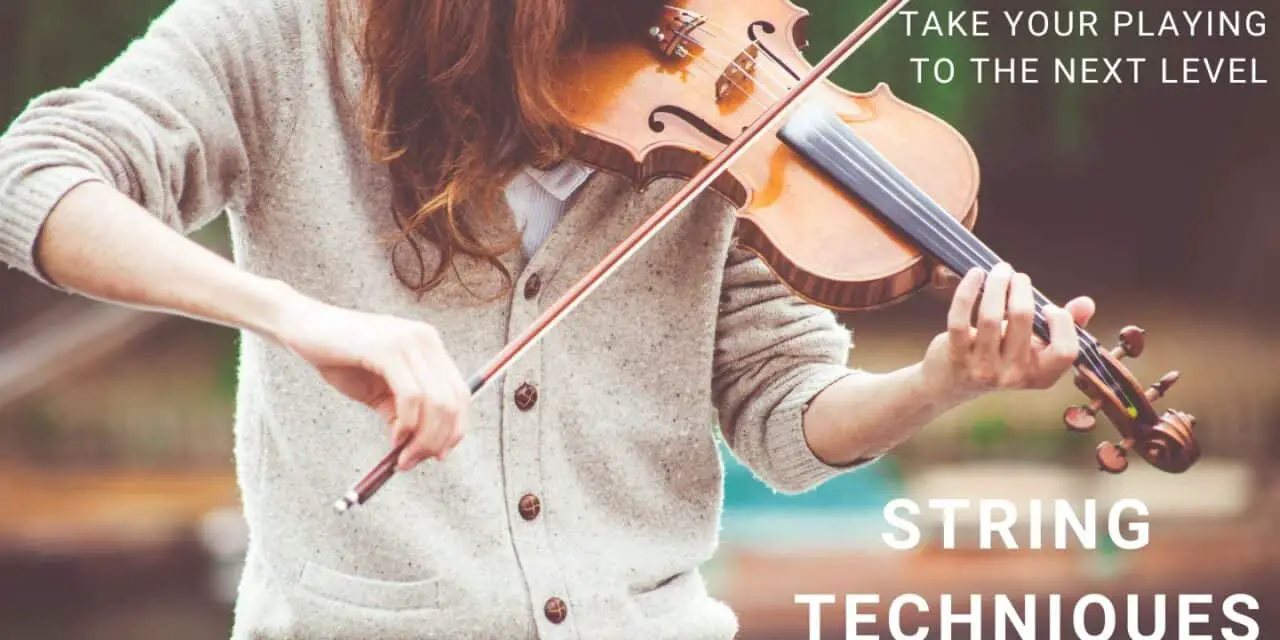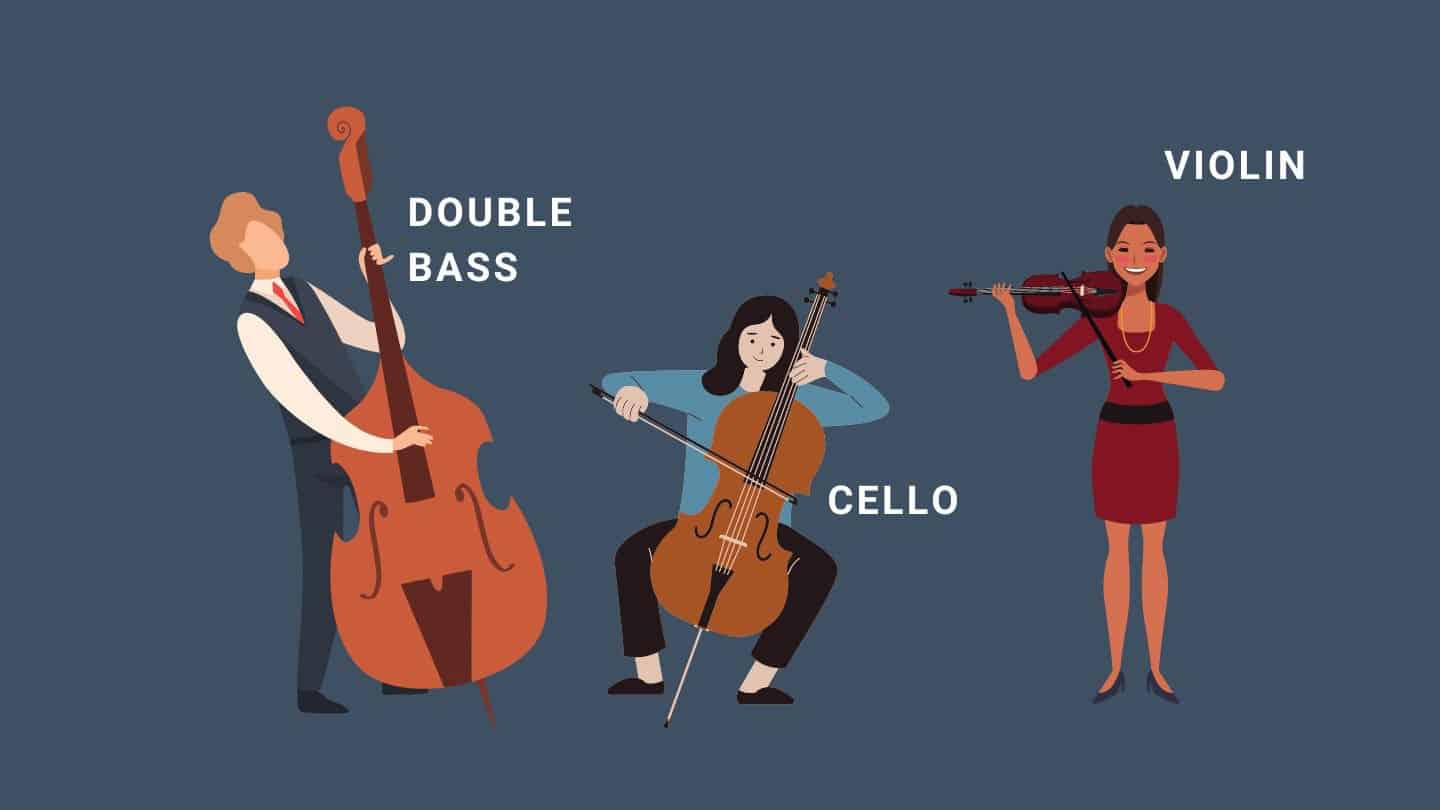If you’re a musician who plays a stringed instrument, you’re aware that there are a range of strategies you can employ to generate a variety of sounds and expressions. From the harsh, percussive sound of pizzicato to the continuous, flowing melodies of arco playing, each method lends a distinctive element to your song. It is essential to many styles of music to learn these string techniques for superior musical performance.
In this article, we will examine some of the most prevalent string techniques employed by musicians. We’ll investigate how they’re employed, the sound they produce, and how you may incorporate them into your playing to make it more expressive and dynamic.
Having these string techniques in your musical arsenal will assist with giving you the proper tools to advance your playing to the next level and always have something new to work on when it comes to musical expression and dynamics.
This article will offer you a good basis for exploring the world of string playing, whether you are a beginner just starting out on your instrument or an experienced performer wishing to expand your repertoire of methods. Grab your instrument and let’s get started!
String Techniques for Superior Musical Performance
The following is a list of string techniques that are an essential part of outstanding musical performances.
Pizzicato – Finger-plucking the strings
Instead of using a bow to play a stringed instrument, a pizzicato musician plucks the strings with their fingers. Depending on how the musician plucks the strings, the result might be a sharp, percussive sound or a softer, more mellow one. You can hear pizzicato in everything from classical to jazz to even modern pop music.
Pizzicato is performed by plucking the string with the index and middle fingers. The thumb can also be utilized as a stabilizing support finger. Changing the finger angle and pressure on the string allows the player to alter the sound’s pitch and volume.
Even though pizzicato is one of the most common string techniques for superior musical performance, it may take years of playing classical repertoire to perfect with accurate technique and improved finger dexterity.
Arco – Playing with a Bow
For those unfamiliar, “arco” refers to the method of playing a stringed instrument using a bow. The bow is formed of a long, thin stick (usually made of wood or carbon fiber) with a length of horsehair strung across its middle. When playing, the bow is drawn across the strings to produce a long, even tone.
The stringed instrument’s expressive potential is greatly expanded by the use of arco. Many tones and timbres can be achieved by the player by manipulating the bow’s speed, pressure, and angle. Coming up with the correct right hand bowing technique can take time to build to a professional level.
Classical music is the most obvious genre in which arco playing is featured, although it is also employed in folk, country, and bluegrass.
Vibrato – A Slight, Rapid Variation in Pitch for Expressive Purposes
To add emotion to their performance, musicians often employ a technique called vibrato, in which they rapidly and subtly shift their pitch. This effect is used to give a note more character and feeling. Although jazz and the blues use vibrato less frequently than classical music, it is nonetheless present in these genres.
Vibrato is achieved by gently rocking the fingertip back and forth across the string while still holding it down. This tiny adjustment can have a significant impact on the quality of the note being played. The vibrato’s tempo and intensity can be adjusted to suit the situation.
The vibrato is one of the quickest string techniques for superior musical performance. It is found in a vast amount of enjoyable repertoire and the hand technique is popular among intermediate players.
Tremolo – Rapid Repetition of a Single Note or Alternating Between Two or More Notes
Tremolo is an effect achieved by rapidly repeating one note or bouncing back and forth between two or more notes. With this method, you can add a sense of drama and excitement to your music. Although it was originally developed for use in classical music, tremolo has now found its way into various genres, most notably rock and metal.
In order to play a tremolo, the performer swiftly moves their bow or fingers across the strings. The tremolo’s rate and volume can be adjusted to suit your needs.
Glissando – Sliding Smoothly Between Two Notes
Glissando refers to a method in which the musician effortlessly glides from one note to the next. With this method, you may give your music a sense of motion and fluidity. Glissando is typically associated with classical music, however, it can also be found in jazz and blues.
The term “glissando” refers to the technique of playing from one note to the next by sliding the finger or bow along the string. Glissandos can be played quickly or slowly, for short or long periods of time, or both.
Another of the popular string techniques for superior musical performance, the glissando is incredibly elegant and beautiful when done correctly with results-driven exercises.
Harmonics – Producing a High-Pitched Tone by Lightly Touching the String at Certain Points
By lightly tapping the string at specific locations, a high-pitched tone can be produced using the harmonics technique. This is a great way to give your instrument a unique sound by giving it a bright, shimmering quality that it wouldn’t otherwise have. The use of harmonics is not limited to classical music; it is also seen in folk and country.
Harmonics are achieved by lightly touching the string at designated nodes while bowing or plucking the chord. By tapping the string at various locations throughout its length, the musician can produce a wide range of harmonics. It produces a tone that is both pure and high in pitch, with overtones that are more complex than the fundamental note.
Muting – Dampening the Sound by Pressing Down on the Strings with the Left Hand or Using a Specific Type of Mute
The left hand of an instrumentalist can be used to mute the instrument by pressing down on the strings or by employing a specialized mute. Using this method, you can alter the sustain of the notes or go for a softer, more relaxed tone.
The player can mute by applying pressure with their left hand to the strings, which will prevent them from vibrating. Light finger pressure or palm coverage of the strings will enough for this purpose. A player can also muffle an instrument by using a special mute, such as a clip made of rubber or metal.
Double Stops – Playing Two Notes Simultaneously on Different Strings
When a musician employs the double stop technique, he or she simultaneously plays two notes on unrelated strings. This is a popular practice in both classical and folk music, and it helps to create a sense of harmony and depth in the song.
To do a double stop, the player simultaneously bows or plucks two strings while holding them down with their left hand. Several intervals can be produced by pressing the strings at various locations along the fingerboard.
Trills – Rapidly Alternating Between Two Notes That Are a Whole or Half Step Apart
Trills are played by swiftly switching between two notes that are one whole step or one half step away from one another. This is a typical practice in classical music and serves to enhance the piece with a sense of enthusiasm and virtuosity.
Trills are performed by swiftly switching between two notes by moving a finger back and forth on the same fret or between neighboring frets. The effect of the trill can be altered by adjusting its tempo and volume.
Slides – Sliding the Finger up or down the String to Reach a Higher or Lower Note
To play a higher or lower note, a musician can use a method called “slides,” in which they slide their finger up or down the string. This method is often employed in blues, rock, and other genres to give the music a sense of flow and motion.
Slides are performed by moving a finger up or down the string smoothly while keeping pressure on it to produce a distinct tone. The slide’s speed and duration are both adjustable to fit your needs.
Improve String Techniques for Superior Musical Performance
Some of these techniques are for intermediate-level students and others may take years to fine-tune from advanced players.
If you are a teacher, then teaching this strong foundation will help your students develop solid, comprehensive technique when playing stringed instruments. Regardless if you are teaching in private studio settings or a public schooling system, having incredible literature with a solid understanding of these string techniques in detail will open up your student’s world with a vast wealth of new skills.







